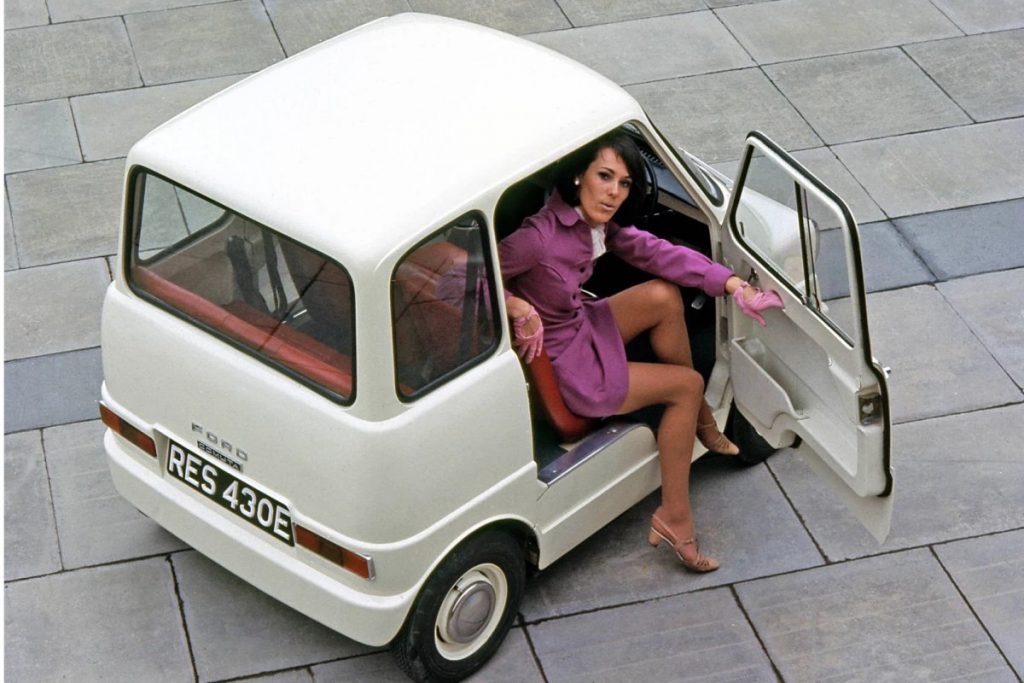
In 1913, Henry Ford and Thomas Edison had collaborated on an electric vehicle. This was not a successful venture. Fifty-four years later, in 1967, Ford of Great Britain, produced their first modern electric vehicle, a Ford Comuta concept/ prototype, developed at Ford’s Dunton Technical Centre, east of London.
The Comuta was 2 032 mm long, and weighed about 545 kg. Along with a fiberglass body, it featured a steel backbone chassis, with an independent suspension provided by leading arms at the front and trailing arms at the rear. Drum brakes were also provided.
It could seat two adults in the front and two children in the rear. It’s top speed of 60 km/h and a range of 60 km if driven at 35 km/h. The rear wheel drive vehicle was powered by dual DC electric motors that put out 3.7 kW. These were originally designed as aircraft auxiliary units. Power came from four mid-mounted 12 V 85 Ah lead-acid batteries, producing a total of about 4 kWh. Ductwork piped air through the central backbone to provid motor cooling and heating for the passenger compartment.
Somewhere between two and six Comutas were built (sources conflict). It was unveiled at the 1967 Geneva Motor Show. One can be found in the collection of the Science Museum in London. The fate of the other(s) is unknown.


If anyone wants additional information about this or other weblog posts, feel free to contact me: brock at mclellan dot no. Sometimes, I have photos not included in the post, technical drawings, articles and/or links.
Ouch. In pre-airbag days and safety belts being a recent standard feature of the 60’s, that little box on wheels looks like a death trap and possibly hard on that lovely lady’s head and stockings. Maybe that’s why there was no uptake.
Acquiring a Ford Comuta, anno 2021, is not something anyone outside of a technology museum should attempt. What makes the Comuta interesting is how far electric vehicle (EV) development has come in the intervening 50 + years. I regard the 2001 – 2002 Norwegian made, Ford owned, Think brand as the spiritual descendent of the Comuta. Its specifications are far superior, but equally far removed from today’s efforts:
Wheelbase: 1 970 mm
Length: 3 143 mm
Width: 1 658 mm
Height: 1 596 mm
Curb weight:1 038 kg
Motor: 34 kW 3-phase induction motor
Battery: 23 kWh EnerDel Li-ion
Range: 160 km.
As for the driver, Carnaby Street in Swinging London was a youth fashion centre, with mini-skirts, culottes, go-go boots, psychedelic and paisley prints and neon colours influencing fashions. Males could choose between Teddy Boy or Mod fashions.